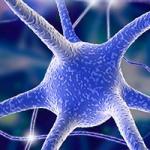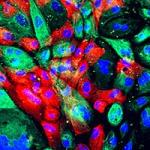
Research Topics
Mitochondria supply ATP essential for neuronal growth and function. Neurons face exceptional challenges to maintain energy supply in distal axons, synapses, and growth cones. Anchored mitochondria serve as local energy sources, and thus regulation of mitochondrial trafficking and anchoring in axons and synapses ensures that energetically active areas are adequately supplied with ATP. In addition, anchored mitochondria need to be removed as they age or become dysfunctional. Mitochondrial dysfunction and impaired transport are hallmark features of major neurodegenerative diseases. Investigations into the regulation of mitochondrial trafficking and anchoring represent an important emerging area. Our central hypothesis is that mitochondrial trafficking and distribution is tightly regulated in order to sense, integrate, and respond to changes in metabolic and growth status, synaptic activity, aging, and pathological stress. Our ongoing investigations are focused on addressing five fundamental questions: (1) how axonal mitochondria are recruited to and captured at active presynaptic terminals in sustaining prolonged synaptic activity and plasticity); (2) how mitochondrial anchoring mechanisms are turned on or off by sensing local ATP levels; (3) how energy signaling pathways enable neurons to distribute axonal mitochondria into areas where energy consumption is high during development, regeneration, and adult neurogenesis; (4) how neurons maintain and recover chronically stressed mitochondria prior to the acute activation of Parkin-mediated mitophagy under physiological and pathological conditions; and (5) how oligodendrocyte-axon trans-cellular signaling maintains axon integrity by boosting axonal mitochondrial energetics.
Lysosomes serve as degradation hubs for autophagic and endocytic components, thus maintaining degradation capacity and cellular homeostasis essential for neuronal survival and function. Endo-lysosomal trafficking delivers targeted materials to mature lysosomes for degradation. The majority of autophagic and endocytic organelles undergo long-distance retrograde transport from distal axons toward the soma, where mature lysosomes are highly enriched. To achieve effective degradation capacity in distal regions, active lysosomes are also recruited to axons under physiological and pathological conditions. Therefore, regulation of bi-directional transport of these organelles plays a critical role in the maintenance of axonal and synaptic degradation capacity. Autophagy-lysosomal dysfunction contributes to the pathogenesis of several major neurodegenerative diseases and axonal dystrophy of lysosomal storage disorders (LSDs). However, mechanistic contributions of impaired endo-lysosome trafficking and lysosomal dysfunction to disease onset and progression remain elusive. Our research program is aimed at addressing the following fundamental issues: (1) how neurons recruit mature and degradative lysosomes into distal axons to effectively eliminate distal protein aggregates and damaged organelles; (2) how chronic lysosomal dysfunction in LSDs compromises axonal delivery of lysosomes, thus leading to axonal dystrophy; (3) how impaired autophagic transport in dopaminergic neurons (DAs) contributes to PD-linked autophagic-lysosome dysfunction, axon degeneration, and DA neuron death; and (4) how aging-associated oxidation stress impairs autophagic-lysosomal distribution and function in distal axons.
The formation of new synapses and maintenance and remodeling of mature synapses require targeted delivery of newly synthesized presynaptic cargoes from the soma to synapses. We previously identified syntabulin as a kinesin-1 motor adaptor that mediates axonal transport of presynaptic cargos to synapses. Knockdown of syntabulin reduces axonal delivery of presynaptic components and impairs synaptic formation and activity-dependent synaptic remodeling. A recent genetic study of autism patients identified a de-novo syntabulin variant that abolishes its interaction with Kinesin-1. Thus, there is an urgent need to establish axonal transport and presynaptic mechanisms underlying autism-associated phenotypes. Using syntabulin cKO mice and an autism-linked syntabulin de-novo mutation, we investigate whether defective presynaptic cargo transport serves as one of the core presynaptic mechanisms underlying autism-like synaptic dysfunction and altered social interactions and communication.
These specific aims are closely interrelated, as mitochondrial transport, mitophagy, energy homeostasis, autophagy and lysosomal function, and presynaptic maintenance are highly coordinated and mechanistically linked. We have applied cutting edge live imaging assays in a multidisciplinary systems analysis of genetic mice combined with gene rescue experiments. Our syntaphilin, snapin and syntabulin mice display striking phenotypes in axonal transport of mitochondria, endosome-lysosomes, and presynaptic cargos. Pursuing these studies will advance our knowledge of fundamental processes affecting neurodevelopmental and neurodegenerative disorders, CNS regeneration and adult neurogenesis.
Biography
Dr. Sheng received his Ph.D. from the University of Pennsylvania School of Medicine, where he worked with Roland Kallen and Robert Barchi in studying sodium channels. He did his postdoctoral research in the laboratory of William Catterall at the University of Washington studying presynaptic calcium channels and the synaptic vesicle docking/fusion machinery. Dr. Sheng joined NINDS as an investigator in 1996 and is now a senior investigator and Chief of the Synaptic Function Section. Dr. Sheng's laboratory focuses on the axonal transport of mitochondria, endosomes, lysosomes, autophagosomes, and presynaptic cargoes, and their impact on axonal energy maintenance and cellular homeostasis, synaptic function, aging-linked axon degeneration, and CNS regeneration after brain injury and ischemia. He has used a broad range of approaches to tackle these problems, notably the development of mature neuronal cultures from adult disease mouse models and live imaging of organelle transport in in vitro and in vivo CNS systems. Dr. Sheng served associate editor of Autophagy and the editorial board of the Journal of Biological Chemistry (JBC). He currently serves as monitoring editor for the Journal of Cell Biology (JCB). Dr. Sheng was elected as an AAAS Fellow in 2016 and an ASCB fellow in 2017. Dr. Sheng received the 2021 Dr. Francisco S. Sy Award for Excellence in Mentorship at HHS. Dr. Sheng is also the recipient of the 2023 NIH Director's Award for seminal contributions to the understanding of axonal mitochondrial and lysosomal transport and maintenance of bioenergetics and cellular homeostasis in synaptic transmission and neural regeneration.
Selected Publications
- Kang JS, Tian JH, Pan PY, Zald P, Li C, Deng C, Sheng ZH. Docking of axonal mitochondria by syntaphilin controls their mobility and affects short-term facilitation. Cell. 2008;132(1):137-48.
- Li S, Xiong GJ, Huang N, Sheng ZH. The cross-talk of energy sensing and mitochondrial anchoring sustains synaptic efficacy by maintaining presynaptic metabolism. Nat Metab. 2020;2(10):1077-1095.
- Lin MY, Cheng XT, Tammineni P, Xie Y, Zhou B, Cai Q, Sheng ZH. Releasing Syntaphilin Removes Stressed Mitochondria from Axons Independent of Mitophagy under Pathophysiological Conditions. Neuron. 2017;94(3):595-610.e6.
- Huang N, Li S, Xie Y, Han Q, Xu XM, Sheng ZH. Reprogramming an energetic AKT-PAK5 axis boosts axon energy supply and facilitates neuron survival and regeneration after injury and ischemia. Curr Biol. 2021;31(14):3098-3114.e7.
- Chamberlain KA, Huang N, Xie Y, LiCausi F, Li S, Li Y, Sheng ZH. Oligodendrocytes enhance axonal energy metabolism by deacetylation of mitochondrial proteins through transcellular delivery of SIRT2. Neuron. 2021;109(21):3456-3472.e8.
Related Scientific Focus Areas
This page was last updated on Wednesday, May 28, 2025

